You are using an out of date browser. It may not display this or other websites correctly.
You should upgrade or use an alternative browser.
You should upgrade or use an alternative browser.
'DIY' Pics 2020
- Thread starter Cereal Killer
- Start date
337alant
Negatively Biased
HaHa I wish, it does sound excellent thoughAre you an employee of Nagra Audio or Dan D’Agostino ???
If it sounds as good as it looks, this will be awesome !
martin clark
pinko bodger
@337alant <thumb -up gif goes here>
I think my pref would be to tap the raw supply.
NB I've a comparable condition in my pre - need c.20mA for my DPA preamp output relay; once I overkilled the offboard PSU, I took the necessary off the raw DC just before the regs, with a big dumb dab of RC lowpass on the way to drop the excess volts. All that off a Block 0-24VAC x encapsulated lump @ c.200mA / winding - exactly like you intend/show. ( A decade + later - no reason to revisit or revise, it just works)
I think my pref would be to tap the raw supply.
NB I've a comparable condition in my pre - need c.20mA for my DPA preamp output relay; once I overkilled the offboard PSU, I took the necessary off the raw DC just before the regs, with a big dumb dab of RC lowpass on the way to drop the excess volts. All that off a Block 0-24VAC x encapsulated lump @ c.200mA / winding - exactly like you intend/show. ( A decade + later - no reason to revisit or revise, it just works)
a.palfreyman
pfm Member
Here's my recently restored XA with homebrew headphone amp and a recent addition; a MM phono stage based on the ion obelisk phono circuit but passively filtered rather than part passive part active:
https://postimg.cc/21ghp7gs
Built on veroboard and rather pleased. Set up in kitchen whilst SWMBO is out!
https://postimg.cc/21ghp7gs
Built on veroboard and rather pleased. Set up in kitchen whilst SWMBO is out!
Last edited:
sq225917
Bit of this, bit of that
jwb5463
pfm Member
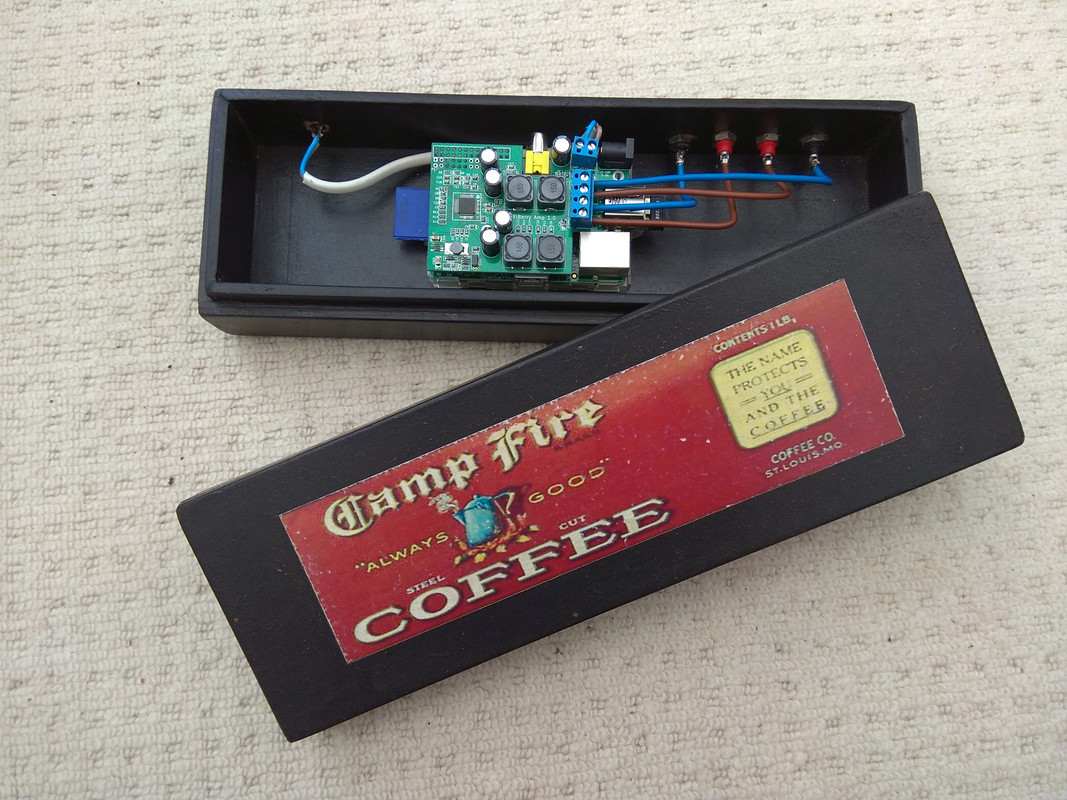
OK, it's not quite on a par with you guys crafting your own speakers, but it kept me busy for an afternoon
Pi model B (the very first one), HifiBerry amp off ebay, an old laptop power adaptor, a few connectors. Less than £15 all-in! Powering some Mission 760i speakers it sounds not half bad.
chiily
PFM Special Builder
Si, you're addicted, admit it.
Great build mind you.
chiily
PFM Special Builder
That's kinda neat.
OK, it's not quite on a par with you guys crafting your own speakers, but it kept me busy for an afternoon
Pi model B (the very first one), HifiBerry amp off ebay, an old laptop power adaptor, a few connectors. Less than £15 all-in! Powering some Mission 760i speakers it sounds not half bad.
Building my DiyAudio BA2018 preamp designed by Wayne from Pass Labs.
Laying out the power supply first (dual mono) before adding the preamp, selector, potentiometer. Having trouble grounding the chassis. Chassis was repurposed from the box our microwave came in, so at least it's eco friendly.
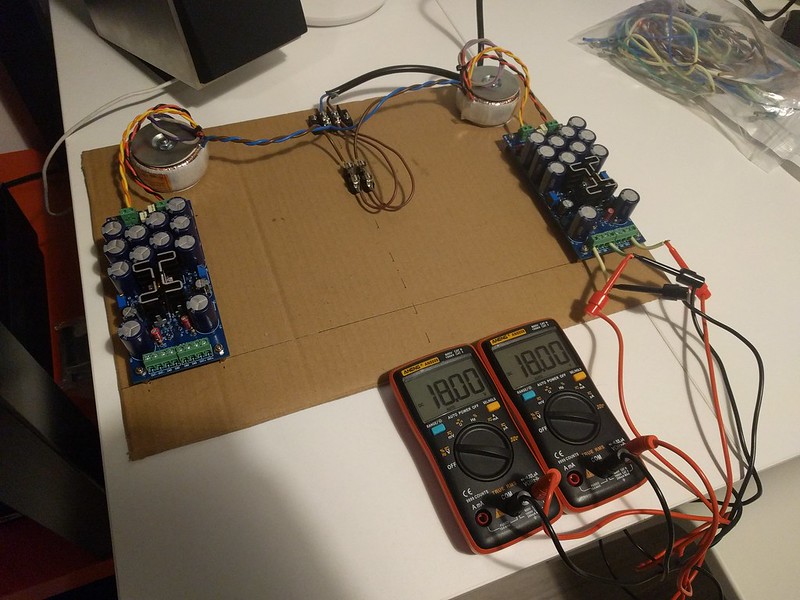
And here's the custom chassis I designed for this pre and my F5:
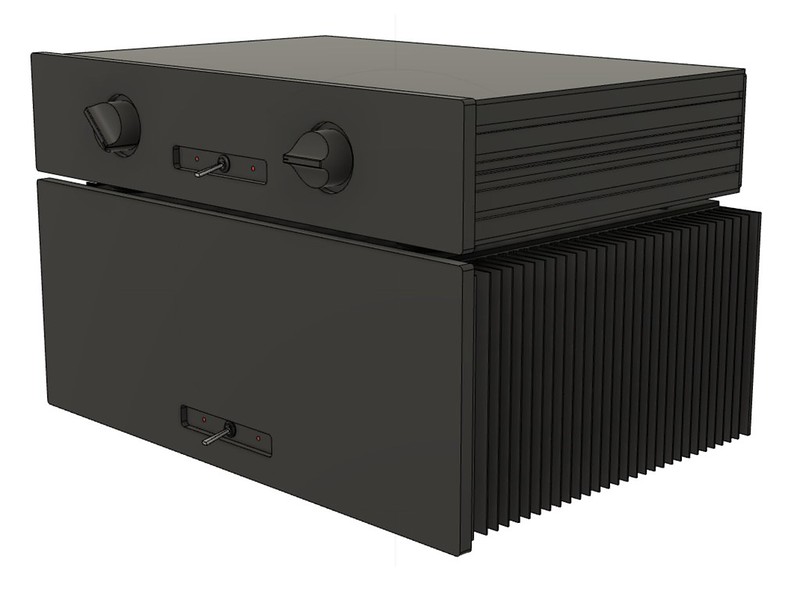
The real deals are in the queue at Modushop...
Laying out the power supply first (dual mono) before adding the preamp, selector, potentiometer. Having trouble grounding the chassis. Chassis was repurposed from the box our microwave came in, so at least it's eco friendly.

And here's the custom chassis I designed for this pre and my F5:

The real deals are in the queue at Modushop...
Last edited:
I finally wrapped up my Pass/FirstWatt F5 25w class A amp and BA2018 preamp (designed by Wayne Coburn from Pass Labs).
They sound excellent, and I'm very happy with the way they turned out (aesthetically, build quality, etc.). I learned a lot of CAD skills along the way (faceplate and internal custom parts). Nothing smoked or blew up, and I never shocked myself. The preamp is very quiet, and the only noise from the amp is a little hum from the big 500VA transformer (hum from the transformer itself, not the speakers). The preamp is dual mono with one VRDN PSU/transformer per channel. The amp includes soft start and speaker protection boards.
The preamp is very quiet, and the only noise from the amp is a little hum from the big 500VA transformer (hum from the transformer itself, not the speakers). The preamp is dual mono with one VRDN PSU/transformer per channel. The amp includes soft start and speaker protection boards.
The BA2018 preamp:
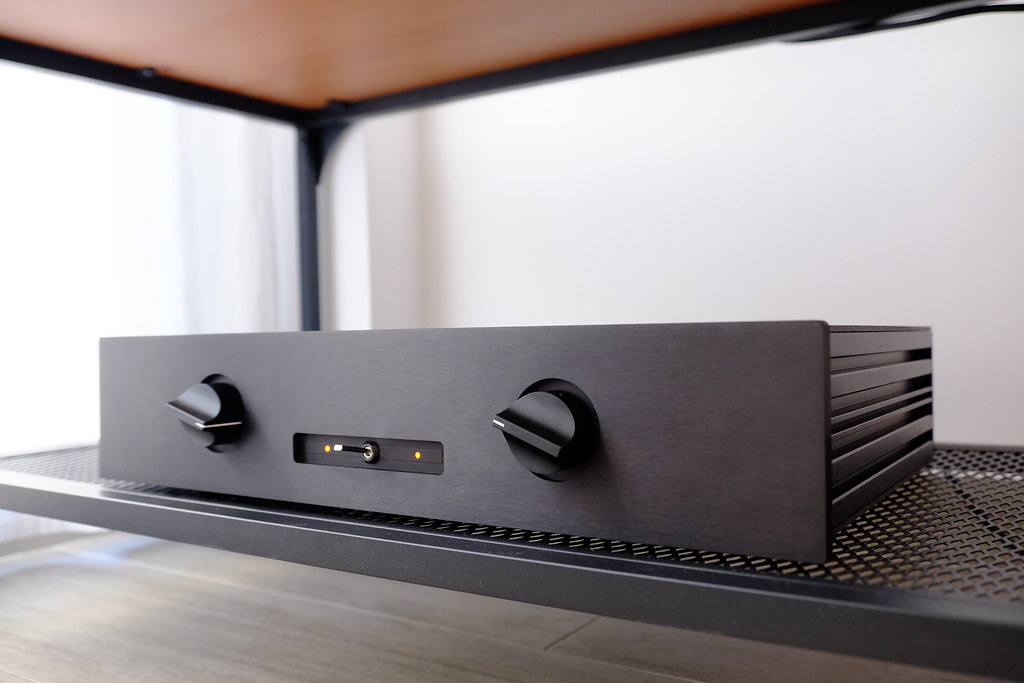
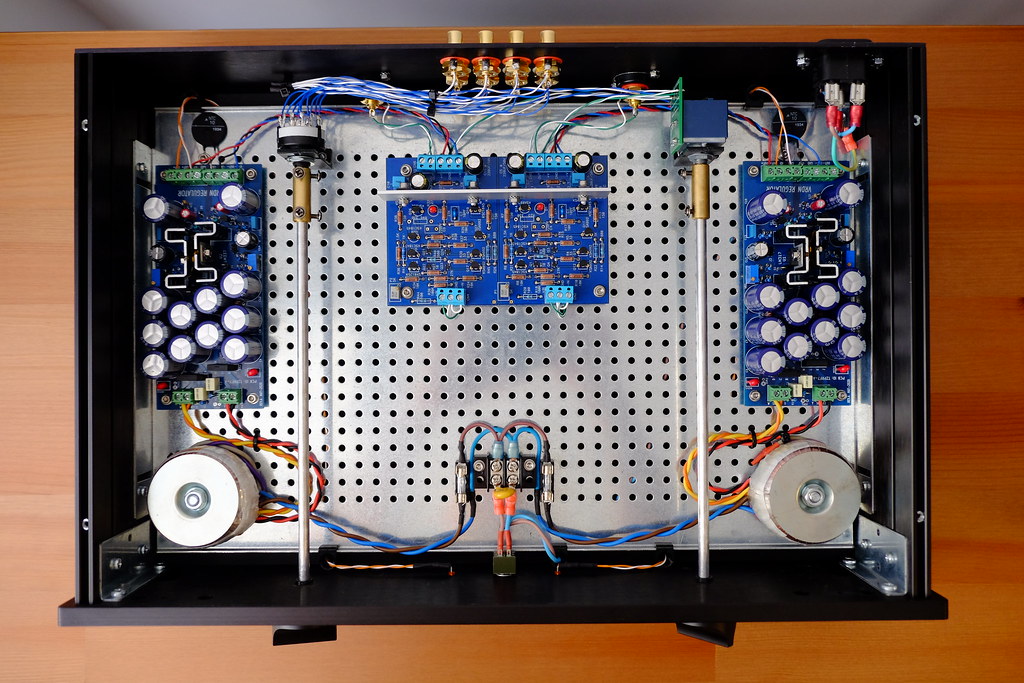
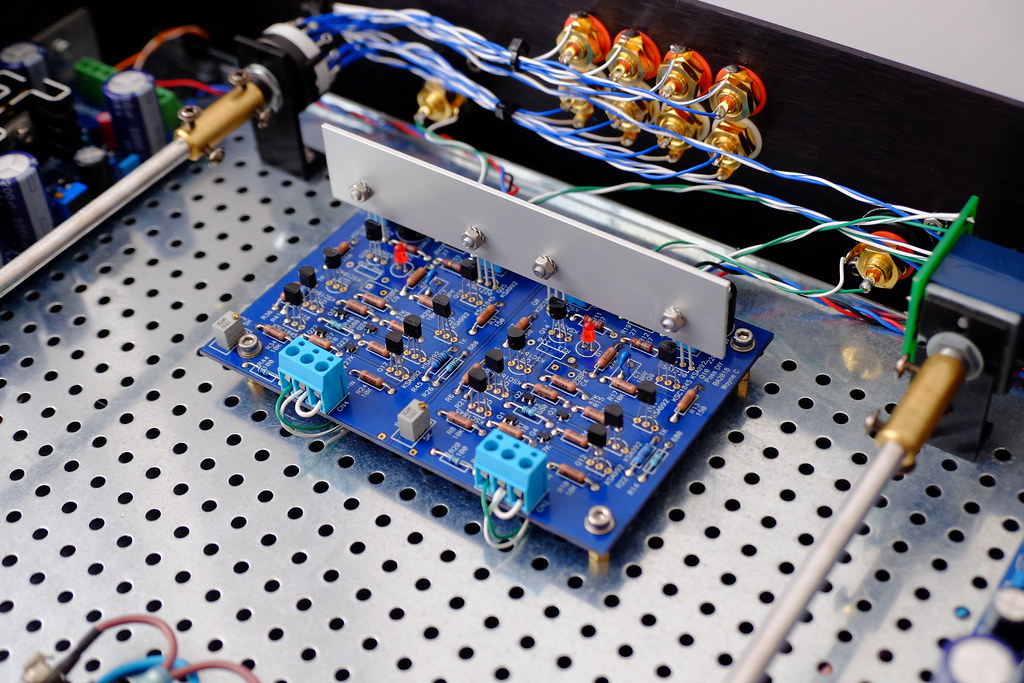
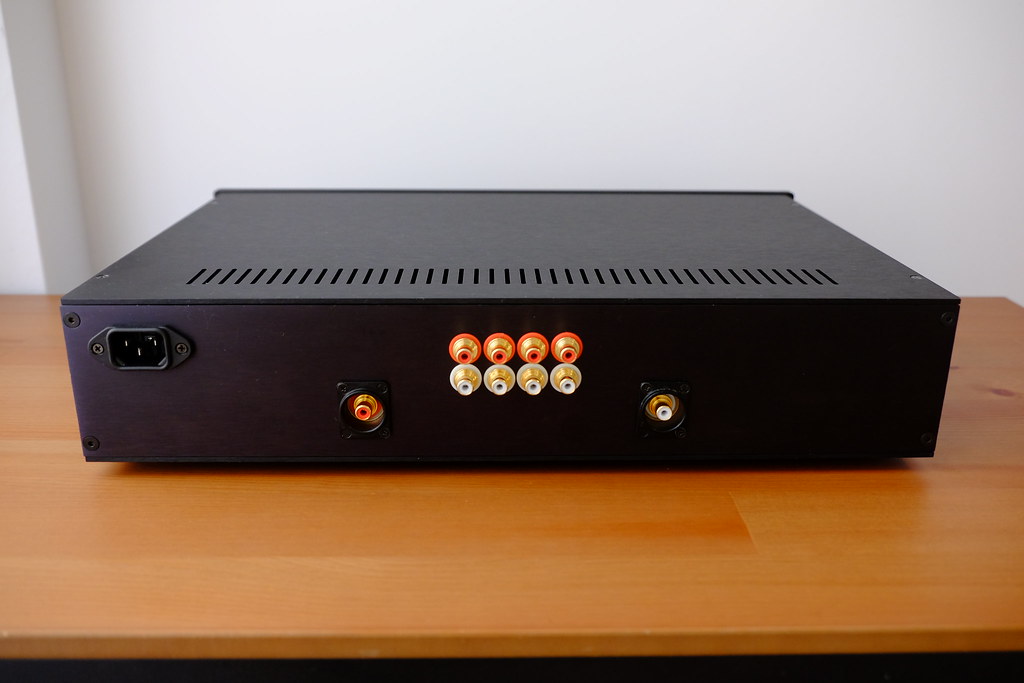
And the F5:

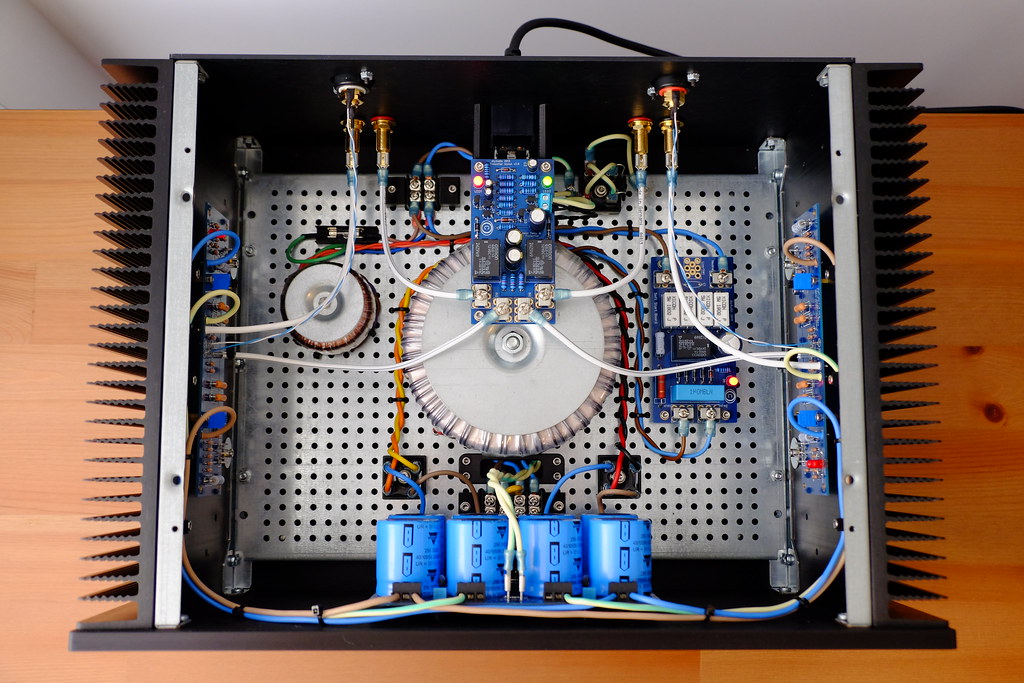
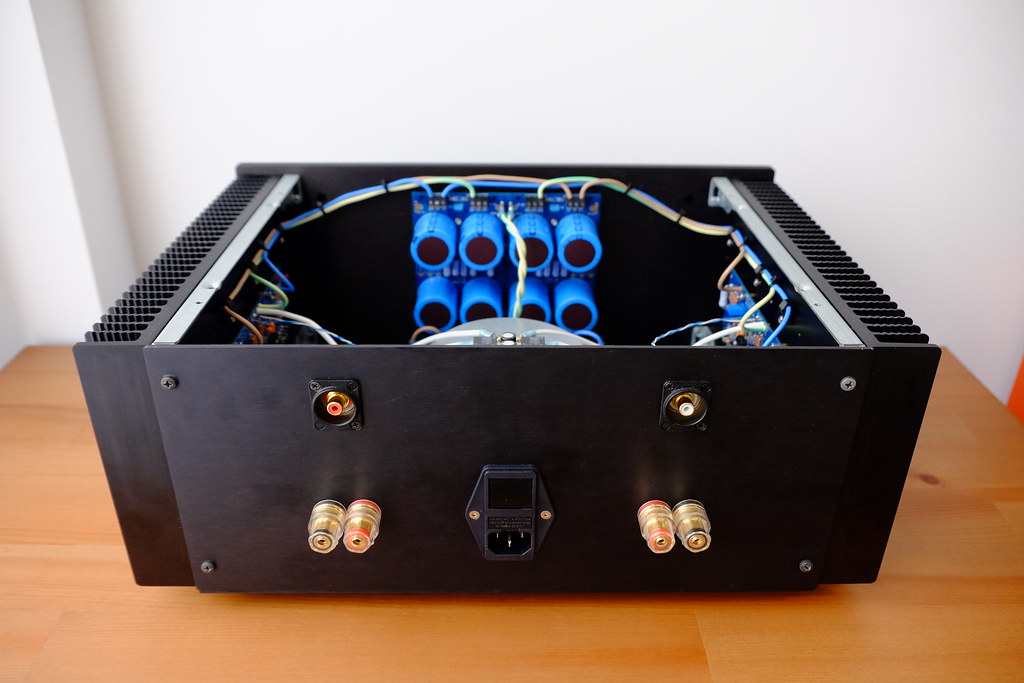
And the happy couple together:
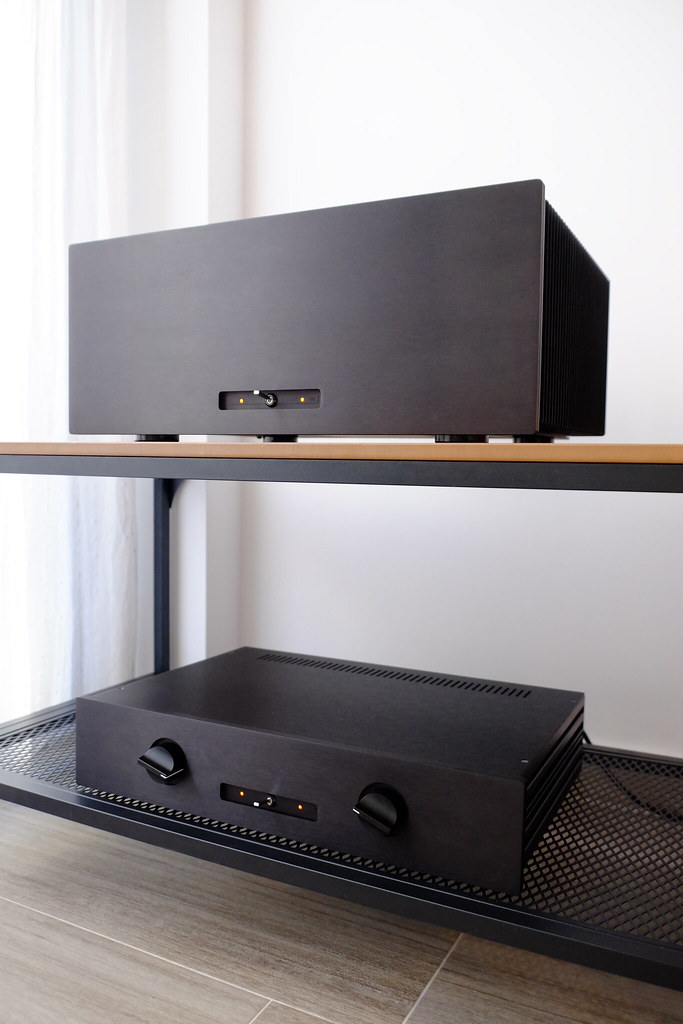
After all that hard work, I am going to sell them! I've never owned anything class A before and didn't appreciate until it was finished how much heat it produces. I live in Valencia, and even now that it's in the 70's and 80's out, it gets uncomfortable in our apartment with the amp running. The beast belongs up in the north somewhere where it will serve a dual purpose (space heater and music maker).
They sound excellent, and I'm very happy with the way they turned out (aesthetically, build quality, etc.). I learned a lot of CAD skills along the way (faceplate and internal custom parts). Nothing smoked or blew up, and I never shocked myself.
The BA2018 preamp:




And the F5:



And the happy couple together:

After all that hard work, I am going to sell them! I've never owned anything class A before and didn't appreciate until it was finished how much heat it produces. I live in Valencia, and even now that it's in the 70's and 80's out, it gets uncomfortable in our apartment with the amp running. The beast belongs up in the north somewhere where it will serve a dual purpose (space heater and music maker).
Don't worry, they'll have the lids on.Very nice builds Booja!
The casework is very professional indeed.
(But please insulate/cover up the live mains terminals before you sell them).
But seriously, I've worked on several commercial amps/preamps/PSUs (Naim, Quad, Rega, Sansui, NAD) that have exposed mains inside. Joe Henry's Pass clones on eBay have unprotected terminals, fuse holders, tab strips inside. I'd understand if it was an unsupported piece of bare metal that could flex and touch something else... But I would have thought it was pretty clear that there aren't user serviceable parts inside and once the cover is off you're taking a risk.
I'm curious to hear your thoughts (and others).
Gervais Cote
Predator
All modern amps should have the main covered especially if there are some fuses that are removable from the inside only.
Nevertheless, some recent ones don’t have the main not covered, maybe due to the country of origins with laws that are more permissive ?
On the other hand, I saw many old Creek amps and tuners where the main was covered although it wasn’t mandatory back then, maybe they were in advance at Creek Audio System ?
Nevertheless, some recent ones don’t have the main not covered, maybe due to the country of origins with laws that are more permissive ?
On the other hand, I saw many old Creek amps and tuners where the main was covered although it wasn’t mandatory back then, maybe they were in advance at Creek Audio System ?
Cereal Killer
432
I finally wrapped up my Pass/FirstWatt F5 25w class A amp and BA2018 preamp (designed by Wayne Coburn from Pass Labs).
They sound excellent, and I'm very happy with the way they turned out (aesthetically, build quality, etc.). I learned a lot of CAD skills along the way (faceplate and internal custom parts). Nothing smoked or blew up, and I never shocked myself.The preamp is very quiet, and the only noise from the amp is a little hum from the big 500VA transformer (hum from the transformer itself, not the speakers). The preamp is dual mono with one VRDN PSU/transformer per channel. The amp includes soft start and speaker protection boards.
The BA2018 preamp:




And the F5:



And the happy couple together:

After all that hard work, I am going to sell them! I've never owned anything class A before and didn't appreciate until it was finished how much heat it produces. I live in Valencia, and even now that it's in the 70's and 80's out, it gets uncomfortable in our apartment with the amp running. The beast belongs up in the north somewhere where it will serve a dual purpose (space heater and music maker).
Stunning skills there on all levels - you should be proud of your work - it'll be like watching your first child roll-off to Uni!! such a shame you can't keep them....
chiily
PFM Special Builder
Really neat build...I always have that intention to get my builds that neat, but I never pull it off like you have.I finally wrapped up my Pass/FirstWatt F5 25w class A amp and BA2018 preamp (designed by Wayne Coburn from Pass Labs).
They sound excellent, and I'm very happy with the way they turned out (aesthetically, build quality, etc.). I learned a lot of CAD skills along the way (faceplate and internal custom parts). Nothing smoked or blew up, and I never shocked myself.The preamp is very quiet, and the only noise from the amp is a little hum from the big 500VA transformer (hum from the transformer itself, not the speakers). The preamp is dual mono with one VRDN PSU/transformer per channel. The amp includes soft start and speaker protection boards.
The BA2018 preamp:




And the F5:



And the happy couple together:

After all that hard work, I am going to sell them! I've never owned anything class A before and didn't appreciate until it was finished how much heat it produces. I live in Valencia, and even now that it's in the 70's and 80's out, it gets uncomfortable in our apartment with the amp running. The beast belongs up in the north somewhere where it will serve a dual purpose (space heater and music maker).
Quick question about that switch in the front panel, it has 240V AC through it? Certainly on the preamp, but on the F5 I assume there's a like buffer board for the power, too much current and all that?
Good question!Really neat build...I always have that intention to get my builds that neat, but I never pull it off like you have.
Quick question about that switch in the front panel, it has 240V AC through it? Certainly on the preamp, but on the F5 I assume there's a like buffer board for the power, too much current and all that?
The moment you switch off the amp there will be an inductive load (maybe not the exact term) that causes a momentary arc across the open contacts and causes wear/pitting. To prevent switch arcing there are safety caps (X1/Y1 760V IIRC) bridging the switch contacts. You can see these (2x) near the switch in the top view. The third cap in the middle is noise suppression, and bridges L and N after the switch.
When you switch on the amp there is an elevated inrush current until the caps reach their normal voltage. The soft start board limits inrush current for about 0.2s which is more than enough time to fill the caps. This prevents the high current at switch on that can be multiple times the steady state current.
The NKK toggle switches I used are rated 3A @ 240V which give a good amount of overhead over the actual current load. If I hadn't used a soft start mechanism then I would have wanted to look into higher rated switches.
ian123running
pfm Member
Happy to oblige...I am highly disappointed with the professionalism of build, both in looks, and in implementation. You should all be ashamed, I mean where is the huge rats nest of wiring, a much too small enclosure with all the bits and bobs hopelessly crammed in, just waiting for a house fire to occur?
Well done all, I love looking at the nice builds, congrats!
 pre amp inside by Ian123_running, on Flickr
pre amp inside by Ian123_running, on Flickrwylton
Naim and Mana member
Don't worry, they'll have the lids on.
But seriously, I've worked on several commercial amps/preamps/PSUs (Naim, Quad, Rega, Sansui, NAD) that have exposed mains inside. Joe Henry's Pass clones on eBay have unprotected terminals, fuse holders, tab strips inside. I'd understand if it was an unsupported piece of bare metal that could flex and touch something else... But I would have thought it was pretty clear that there aren't user serviceable parts inside and once the cover is off you're taking a risk.
I'm curious to hear your thoughts (and others).
Great work as always @booja30 , the exposed mains issue is easily solved by one of these IEC Connector Insulation Boot.
You should always cover the exposed tags on the back of the connector as a matter of good practice.

